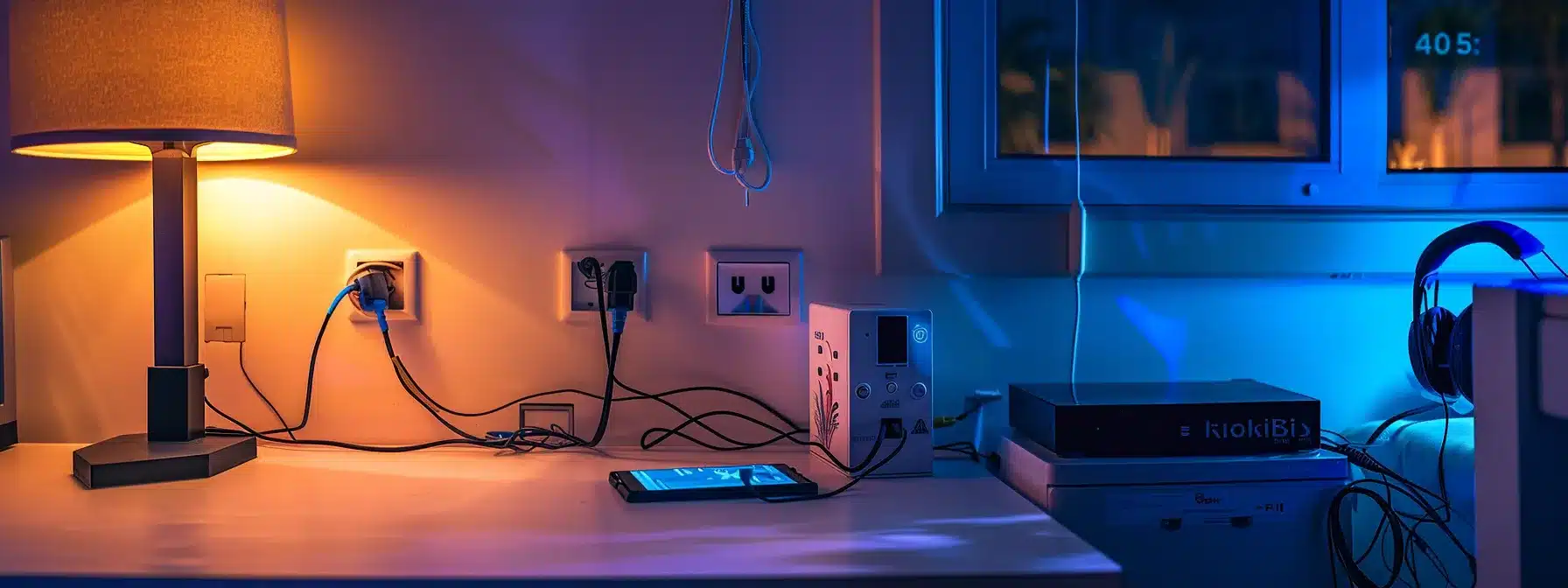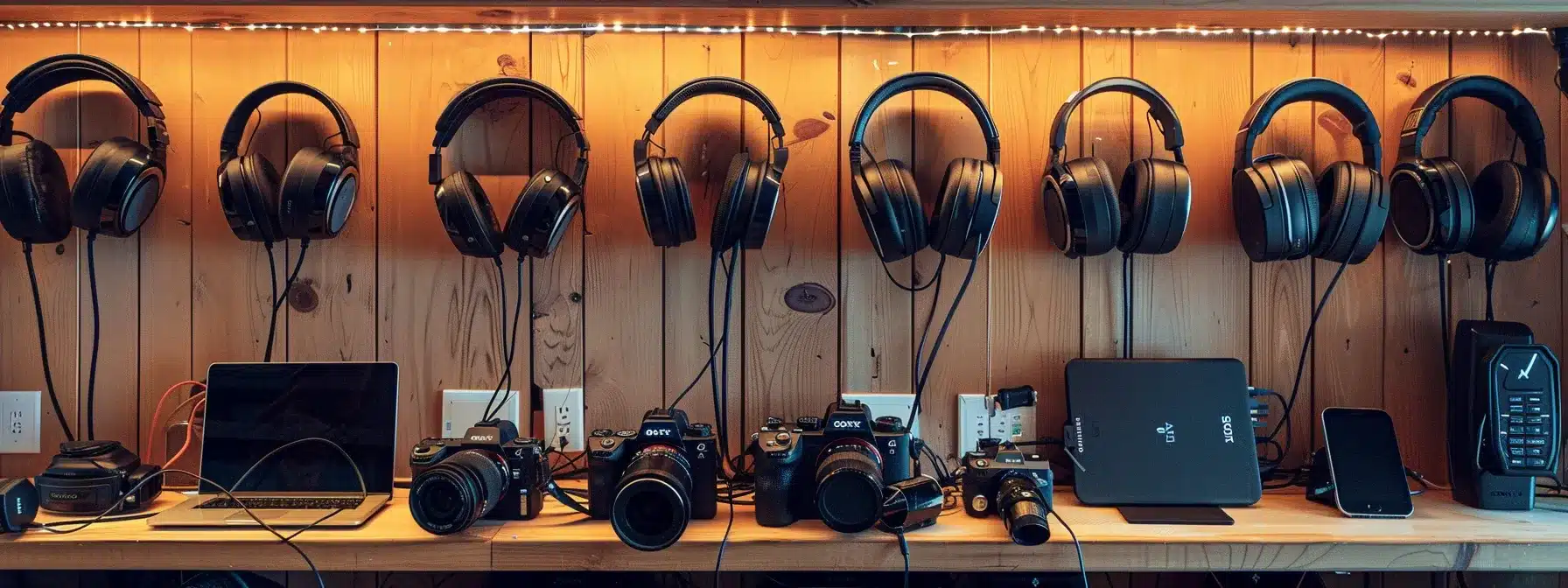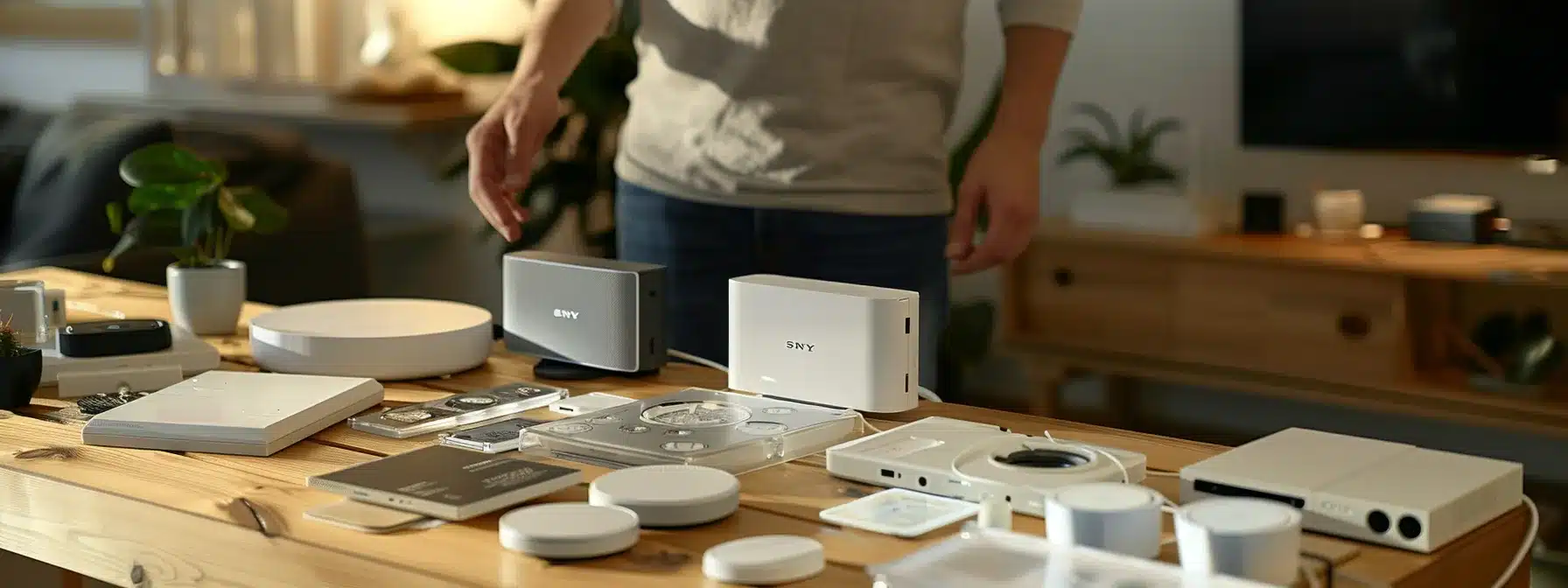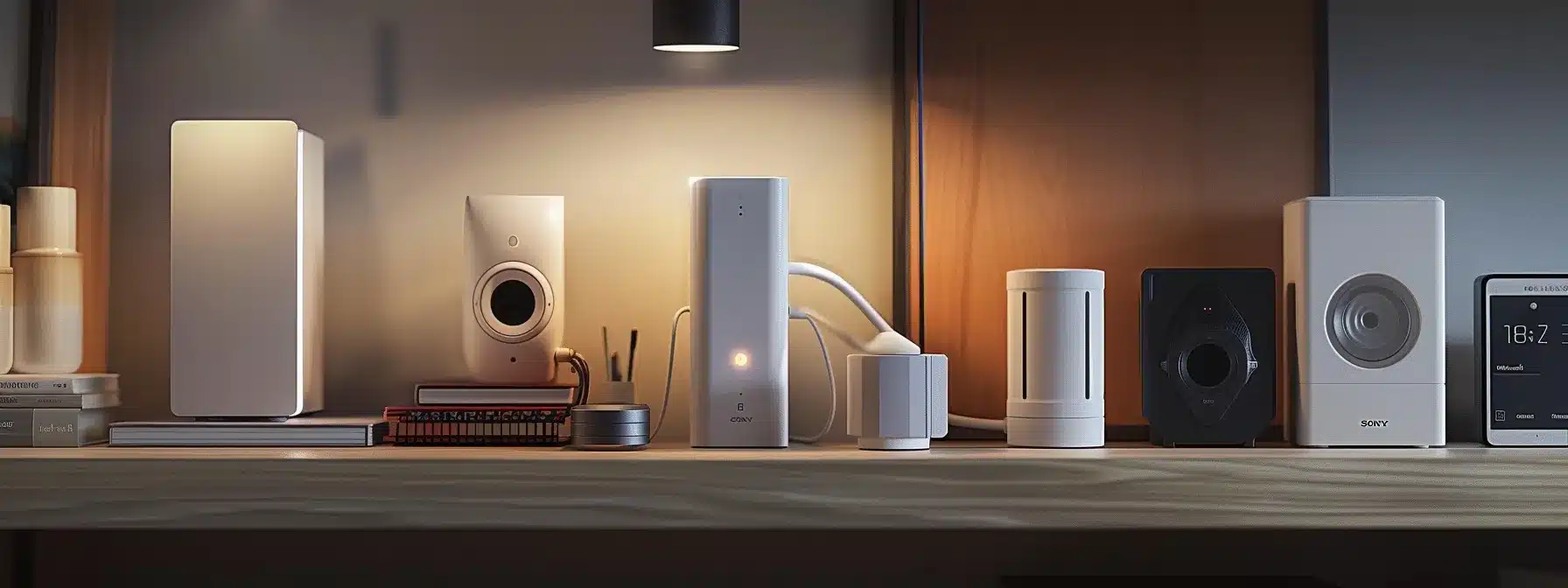Electrical surges can wreak havoc on your devices, causing damage and potential safety hazards. An emergency electrician might recommend Tripp Lite surge protectors to safeguard your modem, computer, and other sensitive electronics from sudden energy spikes. These devices not only protect against surges but also filter out electrical noise, ensuring a cleaner power supply to your equipment. In this article, we’ll explore how to choose the right surge protectors for your home, ensuring your valuable electronics stay safe and functional.
Key Takeaways
- Surge protectors safeguard electronics from voltage spikes and are measured by joule ratings
- Regular maintenance and replacement of surge protectors ensure continued protection for connected devices
- Modern surge protectors offer advanced features like smart technology and diverse charging options
- Proper installation and avoiding common mistakes maximize the effectiveness of surge protectors
- Surge protection needs have evolved with the rise of smart home devices and connected electronics
Understanding How Surge Protectors Safeguard Your Devices

Surge protectors play a crucial role in safeguarding electronic devices from sudden voltage spikes that can damage sensitive components. These protective devices go beyond the basic functions of a power strip or extension cord, offering a shield against electrical surges that may occur during a power outage or when the power supply fluctuates. By understanding the technology behind surge protection, how surges happen, and the key differences between surge protectors and standard power strips, homeowners and businesses can make informed decisions to protect their valuable electronics, including those connected via ethernet or power cords. Consider consulting an emergency electrician for additional guidance during power-related emergencies.
The Basics of Surge Protection Technology
Surge protectors employ specialized components to divert excess voltage away from connected devices. These components, typically metal oxide varistors (MOVs), act as electrical pressure relief valves, redirecting harmful surges to the ground wire. Electricians, including emergency electrician, often recommend surge protectors as a first line of defense against potential equipment failure.
The effectiveness of surge protection is measured in joules, indicating the device’s energy absorption capacity. Higher joule ratings generally offer better protection, but it’s important to note that surge protectors have a finite lifespan. Once they’ve absorbed their maximum capacity, they may continue to power devices but no longer provide surge protection.
While surge protectors are readily available at retail stores, consulting with a professional electrician can help determine the best protection for specific needs. It’s crucial to avoid daisy-chaining surge protectors or using them with heavy-duty gear that exceeds their capacity. Here’s a comparison of surge protection ratings:
How Surges Occur and the Role of Surge Protectors
Electrical surges occur when the voltage in a circuit suddenly spikes above normal levels. These surges can result from various sources, including lightning strikes, power grid fluctuations, or the cycling of high-wattage appliances. Even small devices like remote controls can trigger minor surges when powered on.
Surge protectors act as a barrier between electrical devices and these potentially damaging voltage spikes. They monitor the incoming voltage and divert excess energy to the grounding wire when a surge is detected. This protection is crucial for sensitive electronics like computers, routers, and televisions, which can be easily damaged by sudden voltage increases.
When selecting a surge protector, it’s important to look for UL (Underwriters Laboratories) certification, which ensures the device meets safety standards. The protection capacity of a surge protector is measured in joules, with higher ratings offering more robust defense against surges. Here are some key factors to consider when choosing a surge protector:
- Joule rating: Higher is better for more valuable electronics
- Number of outlets: Ensure enough for all devices
- Clamping voltage: Lower values indicate faster response to surges
- Warranty: Look for products that cover connected equipment
- Additional features: USB ports, coaxial protection, or ethernet jacks
The Difference Between Surge Protectors and Power Strips
While power strips and surge protectors may look similar, they serve different purposes. Power strips simply extend the number of available outlets, offering no protection against voltage spikes. Surge protectors, on the other hand, include components that divert excess voltage away from connected devices, safeguarding them from potential damage.
High-wattage appliances like hair dryers can cause minor surges when turned on, making surge protectors essential for protecting sensitive electronics. Quality surge protectors from brands like Belkin often include additional features such as USB ports for charging devices and LED indicators to show when protection is active.
Surge protectors are designed to handle specific volt ranges and can wear out over time. It’s important to replace them periodically to ensure continued protection. Some models even include special wires for protecting phone lines or ethernet connections, offering comprehensive coverage for various electronic devices.
- Power strips provide additional outlets
- Surge protectors offer protection against voltage spikes
- High-quality surge protectors include extra features
- Periodic replacement is necessary for optimal protection
- Some models protect phone and ethernet connections
Knowing how surge protectors work is just the beginning. Let’s explore which of your devices need this critical shield the most.
Identifying Which Devices Need the Most Protection

In the realm of electrical safety, understanding which devices require robust surge protection is crucial. Not all electronics are created equal when it comes to their vulnerability to power surges, and the risk of damage varies significantly across different types of equipment. From everyday appliances to high-end electronics with sensitive components, each device demands a tailored approach to protection. By prioritizing surge protection based on the value, sensitivity, and replaceability of various household electronics, homeowners can make informed decisions about where to invest in higher joule-rated protectors. This strategic approach not only safeguards valuable equipment but also ensures that the metal components and intricate manufacturing processes within these devices remain uncompromised during unexpected voltage spikes.
Prioritizing Your Electronic Devices for Surge Protection
When prioritizing electronic devices for surge protection, homeowners should focus on expensive and sensitive consumer electronics first. Computers, televisions, gaming consoles, and high-end audio equipment top the list due to their intricate circuitry and high replacement costs. These devices often contain delicate components that can easily suffer damage from even minor power fluctuations.
Next in line for protection are essential home appliances like refrigerators, washing machines, and air conditioning units. While these may be more resilient than smaller electronics, their motors and control boards can still fall victim to power surges. A robust surge protector can help extend the lifespan of these costly appliances and prevent unexpected breakdowns.
Lastly, consider protecting everyday items like lamps, space heaters, and small kitchen appliances. Although these devices may be less expensive to replace, consistent protection can prevent the inconvenience of frequent burnouts. By using appropriate surge protectors for each category of device, homeowners can create a comprehensive shield against electrical anomalies throughout their living space.
The Vulnerability of Various Household Electronics
Computer hardware stands as one of the most vulnerable elements in a household, with its intricate circuitry particularly susceptible to power surges. These devices often lack built-in protection, making external surge protectors crucial for safeguarding expensive components and irreplaceable data.
HVAC systems, while more robust, can still fall victim to significant power fluctuations, especially during lightning storms. The complex control boards and motors in modern HVAC units require consistent voltage to operate efficiently, making surge protection an essential consideration for homeowners looking to protect their investment.
Backup systems and uninterruptible power supplies (UPS) often include surge protection features, but they may not be sufficient for all scenarios. While a UPS can provide temporary power during an outage, it’s important to pair it with a high-quality surge protector to ensure comprehensive defense against electrical anomalies that could bypass the unit’s fuse or internal safeguards.
Special Consideration for High-End Electronics
High-end electronics demand special attention when it comes to surge protection. These devices, such as high-resolution monitors, gaming PCs, and audiophile-grade sound systems, often represent significant investments and contain sensitive components. A lightning strike can cause catastrophic damage to these expensive items, making robust surge protection essential.
When selecting surge protectors for high-end electronics, look for products with proper certification from reputable organizations. These certifications ensure the surge protector meets stringent safety standards and can effectively safeguard valuable equipment. It’s also wise to consider surge protectors that offer additional features like circuit breaker protection, which can prevent overloading and provide an extra layer of safety.
While a basic power strip may suffice for simpler devices, high-end electronics like desktop computers require more comprehensive protection. Consider investing in a whole-house surge protector installed at the main electrical panel, complemented by point-of-use surge protectors for individual devices. This multi-layered approach provides the best defense against various types of power surges:
Power surges pose a real threat to your valuable electronics. Let’s explore how to shield your home with the perfect surge protection strategy.
Selecting the Right Type of Surge Protector for Your Home

Choosing the right surge protector is crucial for safeguarding your home’s electrical wiring and protecting valuable electronics. With various types, features, and brands available, homeowners must consider factors such as price, warranty, and specific protection needs. The right surge protector not only shields devices from power surges but can also contribute to improved indoor air quality by preventing electrical fires. This guide explores the different types of surge protectors, their key features, and how to match them to your unique requirements, ensuring your home and electronics remain safe from unexpected power fluctuations.
Differentiating Between the Types of Surge Protectors
Surge protectors come in various types, each designed to meet specific needs and protection levels. Strip surge protectors, the most common variety, offer multiple outlets and are ideal for desktop setups. Wall-mounted surge protectors provide a more discreet option, fitting directly over existing outlets without taking up floor space.
Whole-house surge protectors, installed at the main electrical panel, offer comprehensive protection for an entire home’s electrical system. These devices require professional installation and regular inspection to ensure optimal performance. Portable surge protectors, often used for travel or temporary setups, provide flexibility but may offer less robust protection compared to their stationary counterparts.
When selecting a surge protector, consumers should consider factors such as joule rating, clamping voltage, and response time. Higher joule ratings indicate greater energy absorption capacity, while lower clamping voltages and faster response times provide better protection against sudden surges. Some advanced models even include smart features, allowing remote monitoring and control via smartphone apps.
Surge Protector Features and What They Mean for You
Surge protectors boast a variety of features that cater to different protection needs. The joule rating indicates the device’s capacity to absorb energy from power surges, with higher ratings offering more robust protection. Clamping voltage, another crucial feature, determines the voltage level at which the surge protector activates, diverting excess energy away from connected devices.
Many modern surge protectors include LED indicators that show when the protection is active or has been compromised. Some models offer additional safeguards like thermal fuses that prevent overheating and potential fire hazards. USB charging ports have become a common feature, allowing users to charge mobile devices without occupying valuable outlet space.
Advanced surge protectors may incorporate power conditioning features that help stabilize voltage and reduce electromagnetic interference. These features can improve the performance and longevity of sensitive electronics. Some high-end models even offer remote monitoring capabilities, allowing users to check the status of their surge protection from their smartphones, providing peace of mind when away from home.
Match Your Surge Protector to Your Specific Needs
Selecting the right surge protector involves considering the specific devices and appliances that need protection. Homeowners should assess the total wattage of their electronics and choose a surge protector with a suitable capacity. For home offices or entertainment systems with multiple high-wattage devices, a surge protector with a higher joule rating and more outlets is essential.
The layout of the space also plays a role in choosing the appropriate surge protector. Wall-mounted options work well in tight spaces or behind furniture, while power strip-style protectors are ideal for areas with multiple devices clustered together. For outdoor electronics or appliances in damp areas, weatherproof surge protectors offer added protection against the elements.
Consider the long-term value and warranty options when selecting a surge protector. Some manufacturers offer warranties that cover not only the surge protector itself but also the connected devices in case of failure. This added protection can provide peace of mind for those with expensive electronics. Here’s a guide to matching surge protectors with different scenarios:
Choosing the right surge protector is just the beginning. Let’s dive deeper into the key features that make a surge protector truly effective for your home.
Key Specifications to Look for in a Surge Protector

Selecting a reliable surge protector requires understanding key technical specifications that determine its effectiveness in safeguarding electronic devices. These crucial factors include joule rating, clamping voltage, and response time. By grasping the significance of each specification, homeowners can make informed decisions when choosing surge protection for their valuable equipment. A surge protector‘s ability to absorb energy, limit voltage spikes, and react swiftly to electrical anomalies plays a vital role in preserving the longevity and functionality of connected devices. Let’s delve into these essential features to equip you with the knowledge needed to select the most suitable surge protector for your specific needs.
Understanding Joule Rating and What It Means for Protection
Joule rating stands as a crucial metric in surge protectors, indicating the device’s capacity to absorb excess electrical energy. Higher joule ratings translate to greater protection, with the ability to safeguard against more powerful or frequent surges. Electricians often recommend surge protectors with ratings of 1000 joules or more for most household electronics.
The joule rating directly impacts a surge protector‘s lifespan and effectiveness. As the device absorbs surges over time, its protective capacity diminishes, making it essential to replace units that have endured significant electrical events. Some high-end models feature indicator lights that signal when the surge protector has reached the end of its protective life.
When selecting a surge protector, consider the value and sensitivity of the equipment you’re safeguarding. For expensive electronics or areas prone to frequent power fluctuations, opting for a surge protector with a higher joule rating provides an extra layer of security. Remember, while a higher rating offers more protection, it also typically comes with a higher price tag.
The Importance of Clamping Voltage
Clamping voltage represents the threshold at which a surge protector activates, diverting excess voltage away from connected devices. A lower clamping voltage indicates faster response to surges, providing better protection for sensitive electronics. Electricians typically recommend surge protectors with clamping voltages below 400 volts for optimal safeguarding of household equipment.
The relationship between clamping voltage and joule rating plays a crucial role in a surge protector‘s effectiveness. While a high joule rating indicates greater energy absorption capacity, a low clamping voltage ensures that protection kicks in before damaging voltage levels reach connected devices. This combination offers comprehensive defense against various types of power fluctuations.
When evaluating surge protectors, consumers should consider the specific needs of their electronic devices and local power conditions. Areas prone to frequent lightning strikes or power grid instabilities may benefit from surge protectors with lower clamping voltages. Understanding these specifications empowers homeowners to make informed decisions about protecting their valuable electronics:
- Compare clamping voltages across different models
- Consider local power conditions and frequency of surges
- Balance clamping voltage with joule rating for comprehensive protection
- Consult with a professional electrician for personalized recommendations
The Response Time of a Surge Protector
Response time measures how quickly a surge protector reacts to voltage spikes, typically measured in nanoseconds. Faster response times provide better protection for sensitive electronics, as they limit exposure to potentially damaging surges. Most quality surge protectors offer response times of one nanosecond or less.
The effectiveness of a surge protector‘s response time depends on its coordination with other specifications like clamping voltage and joule rating. A surge protector with a fast response time but inadequate energy absorption capacity may still fail to protect connected devices from powerful surges. Electricians recommend considering all three factors when selecting surge protection.
When evaluating surge protectors, consumers should look for models with UL certifications that verify response time claims. Some manufacturers provide detailed specifications, while others may use terms like “instantaneous response” without providing specific measurements. For optimal protection, prioritize surge protectors that offer a balance of fast response times and robust energy absorption capabilities:
- Look for response times of one nanosecond or less
- Consider UL-certified surge protectors for verified performance
- Balance response time with clamping voltage and joule rating
- Consult product specifications for detailed information
- Seek professional advice for high-value or sensitive equipment protection
With the right surge protector in hand, it’s time to put it to work. Let’s dive into the installation process to ensure your electronics get the best protection possible.
Installation Tips for Maximum Protection and Safety

Proper installation of surge protectors is crucial for maximizing their effectiveness and ensuring the safety of connected devices. By following best practices and avoiding common pitfalls, homeowners can create a robust defense against electrical surges. This section explores key installation tips, common mistakes to steer clear of, and the importance of regular maintenance to keep surge protection systems functioning optimally. Understanding these aspects empowers users to safeguard their electronics and maintain a secure electrical environment within their homes or offices.
Best Practices for Installing Your Surge Protector
Proper placement of surge protectors is crucial for optimal performance. Users should install them as close to the devices being protected as possible, minimizing the length of exposed wiring. Avoid daisy-chaining multiple surge protectors, as this can reduce their effectiveness and create potential fire hazards.
Ensuring a proper ground connection is essential for surge protectors to function correctly. Users should verify that their home’s electrical system has a properly installed ground wire and that the surge protector is plugged into a grounded outlet. For added protection, consider using surge protectors with built-in circuit breakers or GFCI protection.
Regular inspection and maintenance of surge protectors are vital for continued protection. Users should periodically check for signs of wear, damage, or overheating. Replace surge protectors immediately if they show any signs of malfunction or have absorbed a significant surge. Keep the following best practices in mind when installing and maintaining surge protectors:
- Install surge protectors in easily accessible locations for quick disconnection if needed
- Use dedicated outlets for high-power devices rather than relying solely on surge protectors
- Keep surge protectors away from heat sources and areas with high humidity
- Label connected devices and cords for easy identification and management
- Consider professional installation for whole-house surge protection systems
Avoiding Common Mistakes in Surge Protector Installation
One common mistake in surge protector installation involves overloading the device with too many high-wattage appliances. Users often plug power-hungry devices like space heaters or air conditioners into surge protectors designed for lighter loads, potentially causing overheating or failure. To avoid this, homeowners should check the wattage ratings of their devices and match them to appropriate surge protectors.
Another frequent error is neglecting to replace surge protectors after significant electrical events. Many people assume that once installed, surge protectors provide indefinite protection. However, these devices wear out over time, especially after absorbing large surges. Users should replace their surge protectors every few years or after any major power event to ensure continued protection.
Improper grounding poses a significant risk when installing surge protectors. Some homeowners attempt to bypass grounding by using adapters or modifying plugs, which can render surge protection ineffective and create safety hazards. Always ensure that surge protectors are plugged into properly grounded outlets, and consult a professional electrician if unsure about the home’s grounding system.
Regular Maintenance for Long-Term Safety and Performance
Regular maintenance of surge protectors ensures their continued effectiveness in safeguarding electronic devices. Users should inspect their surge protectors monthly, checking for signs of damage, discoloration, or burning odors. Any visible wear or unusual warmth during operation indicates a need for immediate replacement.
Testing surge protectors periodically helps verify their functionality. Many modern surge protectors feature indicator lights that show whether protection is active. Users should familiarize themselves with these indicators and check them regularly. For surge protectors without built-in diagnostics, consider using a surge protector tester to confirm proper operation.
Maintaining a clean environment around surge protectors contributes to their longevity and performance. Dust and debris can accumulate over time, potentially interfering with the device’s ability to dissipate heat effectively. Regular cleaning with a dry cloth or compressed air can help prevent these issues. Additionally, users should keep surge protectors away from areas prone to moisture or extreme temperatures:
- Perform monthly visual inspections
- Test surge protectors using built-in indicators or specialized tools
- Clean surge protectors regularly to prevent dust buildup
- Keep devices in a cool, dry environment
- Replace surge protectors every 3-5 years or after significant power events
Surge protectors evolve with technology, keeping pace with our ever-growing electrical demands. Let’s explore how updating your surge protection can safeguard your modern devices and home systems.
Updating Your Surge Protectors for Modern Electrical Needs

As technology evolves, so do the electrical demands of modern homes. Outdated surge protectors may not adequately safeguard today’s sophisticated electronics, leaving them vulnerable to power fluctuations. Recognizing when to replace aging surge protectors, understanding the advanced features of newer models, and adapting to the changing landscape of home electronics are crucial steps in maintaining a robust electrical protection system. By staying informed about the latest developments in surge protection technology, homeowners can ensure their valuable devices remain shielded from unexpected power surges and enjoy the benefits of enhanced safety features tailored to contemporary electrical needs.
When to Replace Your Surge Protector
Surge protectors wear out over time, especially after absorbing multiple power surges. Homeowners should replace their surge protectors every three to five years to ensure optimal protection for their electronic devices. Some modern surge protectors feature indicator lights that signal when it’s time for replacement, making it easier to maintain effective protection.
Signs that a surge protector needs replacement include visible damage, discoloration, or a burning smell. If the surge protector feels warm to the touch during normal operation, it may have suffered internal damage and should be replaced immediately. Additionally, if connected devices experience unexplained malfunctions or power issues, the surge protector may no longer be functioning correctly.
After a major electrical event, such as a nearby lightning strike or a significant power outage, it’s wise to replace surge protectors even if they appear undamaged. These events can silently degrade a surge protector‘s effectiveness, leaving connected devices vulnerable to future surges. When replacing surge protectors, consider upgrading to models with higher joule ratings and additional features to better protect modern electronics:
- Check for visible damage or unusual odors
- Replace after major electrical events
- Upgrade to higher joule ratings for better protection
- Look for models with indicator lights for easy monitoring
- Consider surge protectors with advanced features for modern devices
Modern Features in New Surge Protectors
Modern surge protectors boast advanced features designed to meet the demands of today’s electronics. Many new models incorporate smart technology, allowing users to monitor and control their devices remotely via smartphone apps. These smart surge protectors often provide real-time energy consumption data and alerts for potential electrical issues.
Enhanced safety features have become standard in newer surge protectors. Auto-shutoff mechanisms detect when a device is fully charged and cut power to prevent overcharging and reduce fire risks. Some models also include built-in circuit breakers that trip when overloaded, offering an additional layer of protection against electrical hazards.
Surge protectors now cater to the diverse charging needs of modern devices. Many include USB ports with fast-charging capabilities, eliminating the need for separate charging adapters. Some high-end models even offer USB-C ports and wireless charging pads, providing versatile power options for smartphones, tablets, and other portable electronics.
Adapting to the Evolution of Home Electronics
The rapid evolution of home electronics has transformed the way we interact with technology in our living spaces. Smart home devices, high-powered gaming systems, and energy-efficient appliances now dominate the modern household, each with unique power requirements and sensitivities to electrical fluctuations. This shift necessitates a reevaluation of surge protection strategies to ensure these sophisticated devices remain safeguarded against power surges and unexpected electrical events.
Surge protectors have adapted to accommodate the diverse charging needs of contemporary gadgets. Many now feature a mix of traditional outlets, USB ports, and even wireless charging pads to support various devices simultaneously. This versatility allows homeowners to consolidate their charging solutions, reducing clutter and maximizing the efficiency of their electrical setups.
As homes become more connected, surge protectors have evolved to include network protection features. These advanced models safeguard not only against power surges but also shield ethernet connections and coaxial cables from potential damage. By offering comprehensive protection for both power and data lines, modern surge protectors play a crucial role in maintaining the integrity of smart home ecosystems and ensuring uninterrupted connectivity for internet-dependent devices.
Conclusion
Selecting dependable surge protectors plays a crucial role in safeguarding valuable electronics and ensuring electrical safety in modern homes. By understanding key specifications like joule ratings, clamping voltage, and response time, homeowners can choose the most effective protection for their specific needs. Proper installation and regular maintenance of surge protectors maximize their performance and longevity, providing peace of mind against unexpected power fluctuations. As home electronics continue to evolve, staying informed about the latest surge protection technologies allows homeowners to adapt their electrical safety measures, ensuring comprehensive protection for their increasingly connected living spaces.

